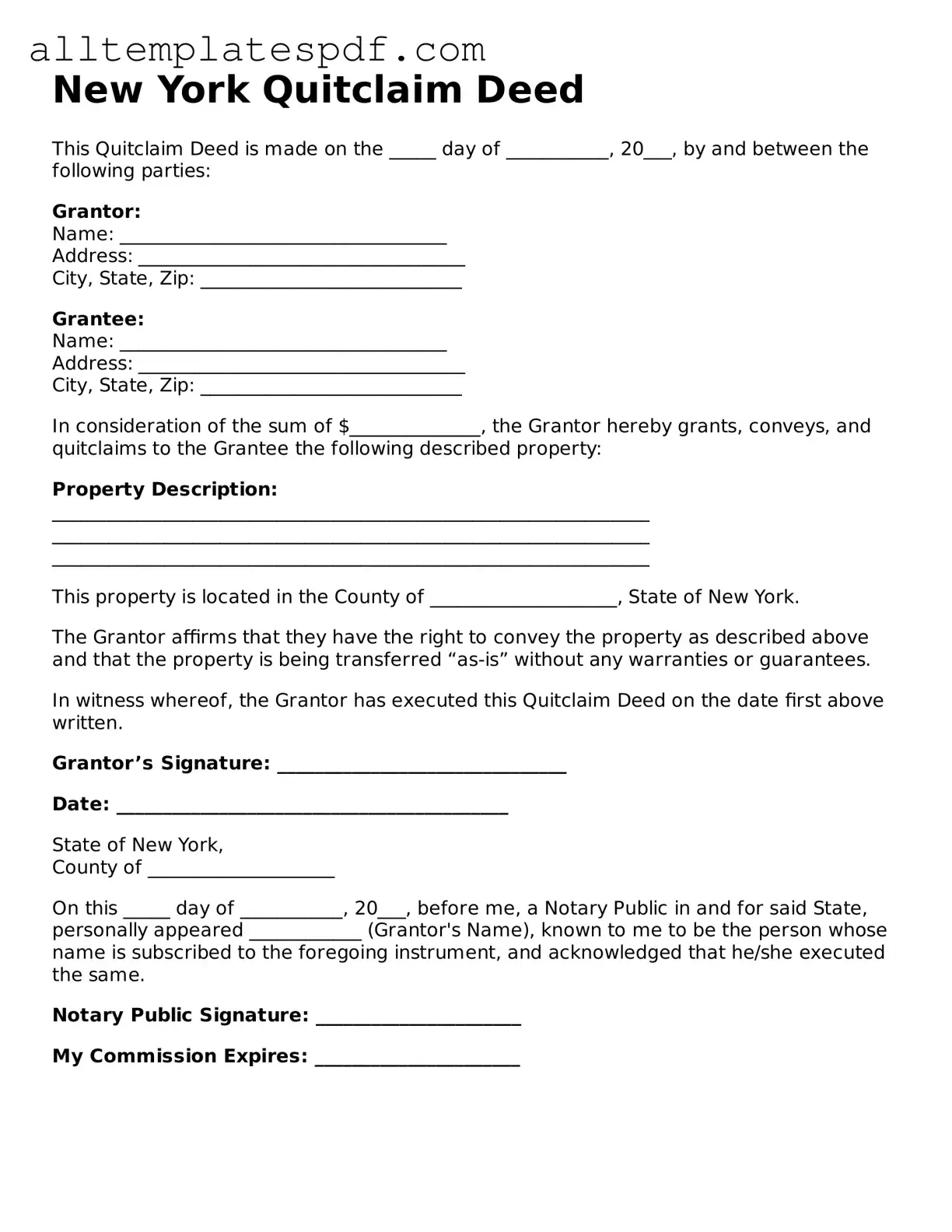Filling out a New York Quitclaim Deed form can be a straightforward process, but many individuals make common mistakes that can lead to complications. One frequent error is failing to provide complete and accurate names of the parties involved. This includes ensuring that the names match those on legal documents. Omitting a middle name or using a nickname can create confusion or disputes in the future.
Another mistake often made is neglecting to include the correct property description. A vague or incomplete description can lead to misunderstandings about what property is being transferred. It is crucial to use the exact legal description as found in the property’s title or deed. This ensures clarity and prevents potential legal issues down the line.
People also tend to overlook the requirement for notarization. A Quitclaim Deed must be signed in the presence of a notary public to be legally valid. Failing to have the deed notarized can render the document ineffective, leaving the property transfer unrecognized by the state.
Additionally, individuals sometimes forget to check the tax implications of the transfer. While a Quitclaim Deed itself does not typically trigger a transfer tax, it is essential to understand any potential tax consequences that may arise from the transaction. Consulting with a tax professional can provide valuable insights.
Another common oversight is not filing the deed with the appropriate county clerk's office. After completing the Quitclaim Deed, it must be recorded to be effective against third parties. Skipping this step can lead to issues regarding the property’s ownership and rights.
Some individuals fail to consider the implications of transferring property without adequate consideration. While a Quitclaim Deed can be used to transfer property without payment, doing so may have legal and financial ramifications. Understanding these implications is vital to avoid future disputes.
Moreover, people sometimes neglect to review the deed for errors after completing it. Simple mistakes, such as typos or incorrect dates, can lead to significant issues. Taking the time to carefully review the document can save a great deal of trouble later.
Lastly, individuals may not seek legal advice when necessary. While it is possible to complete a Quitclaim Deed without an attorney, having legal guidance can help navigate the complexities of property law. A professional can provide clarity and ensure that all aspects of the deed are properly addressed.
